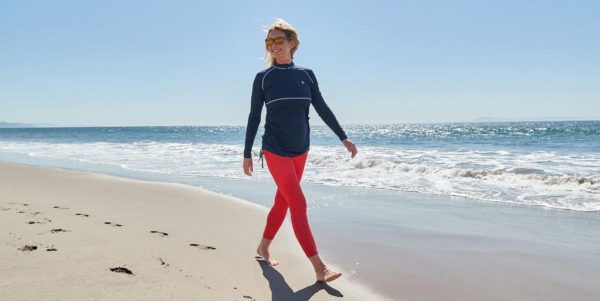Higher SPF should mean better protection from the sun’s harmful UV rays, right? But that is not necessarily true. According to recent reports, lotions with a very high SPF only provide a little extra protection when compared to sunscreens with an SPF between 30 and 50. Higher SPF sunscreens tend to give a false sense of security, which can result in people spending more time in the sun and increasing their risk of sunburns and skin cancer. Keep reading to learn how you can best keep your skin safe and protected!
What Does SPF Indicate?
Sun Protection Factor (SPF) indicates the extra time it will take to cause damage to your skin on top of the usual time it takes your skin to acquire damage without a sunscreen. In other words, when wearing a product with SPF 30, it will take 30 times longer for a sunburn to occur your skin than without the use of sunscreen.
Does High SPF Really Matter?

An SPF 30 product allows nearly 3% of the sun’s UV rays to penetrate your skin. In comparison, an SPF 50 lotion allows roughly 2% of the UV rays to pass through. This may seem like a relatively small difference, but in fact it means that SPF 30 allows 50% more rays to hit your skin.
Under controlled conditions, such as in a lab, sunscreen products with higher SPF and broad-spectrum range offer more protection against sunburns and DNA damage. However, in real-world situations, products with higher SPFs have little to offer aside from creating a false sense of enhanced protection.
Individuals who choose to use sunscreen products with a very high SPF tend to spend more time out in the sun and skip re-applying them. They may think that they don’t need to be in the shade or wear sun-protective clothing including a hat and sunglasses. This causes them to actually get more UV exposure which negates the true purpose of using sunscreen.
Why You Don’t Need The Highest SPF
Products with very high SPFs have higher concentrations of UV-filtering chemicals than the ones with low SPFs. Research suggests that these compounds may pose health-related risks if they penetrate deep into the skin. These ingredients are known to trigger tissue damage and hormonal disruptions as well as allergic skin reactions.
The additional chemical exposure with the use of sunscreens with very high SPF would only be justified if they were significantly better than their lower SPF counterparts when it comes to lowering the risk of UV-induced damage to the skin.However, the reality is that they are not better in real life! Therefore, for most individuals, choosing products with SPF between 30 and 50 is the best option.
However, there are certain situations in which someone would need a higher SPF. These include people with elevated risk of skin cancer, certain genetic disorders, and some immune diseases. The same applies to individuals who participate in certain activities, such as skiing or hiking at high altitudes.
What Do The professionals Recommend?
Skin cancer physicians recommend using a broad-spectrum, water-resistant sunscreen with an SPF of 30 or higher for all kinds of extended exposure to the sun. Irrespective of the SPF number that the products holds, 2 tablespoons (1 ounce) of it should be applied 30 minutes before going out in the sun. Also, a sunscreen product should be re-applied every 2 hours and after sweating or swimming.
The Takeaway
Your focus should be on the best overall strategy to safeguard your skin. This means, you shouldn’t bank completely on high-SPF products. Sunscreen is just a part of the broader strategy, which also includes being in the shade as well as wearing protective clothing, UV-blocking sunglasses, and a wide-brimmed hat.




